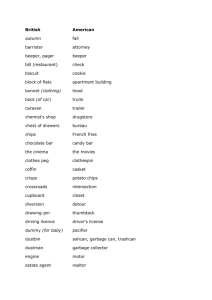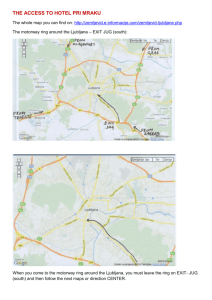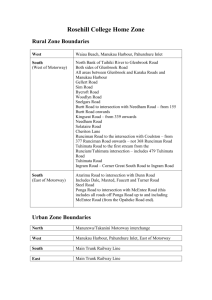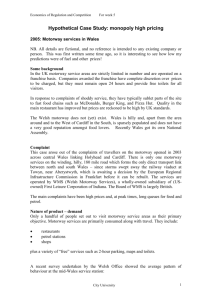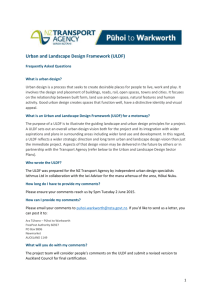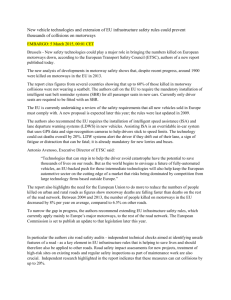A2 motorway Świecko - Nowy Tomyśl vs natural environment
advertisement
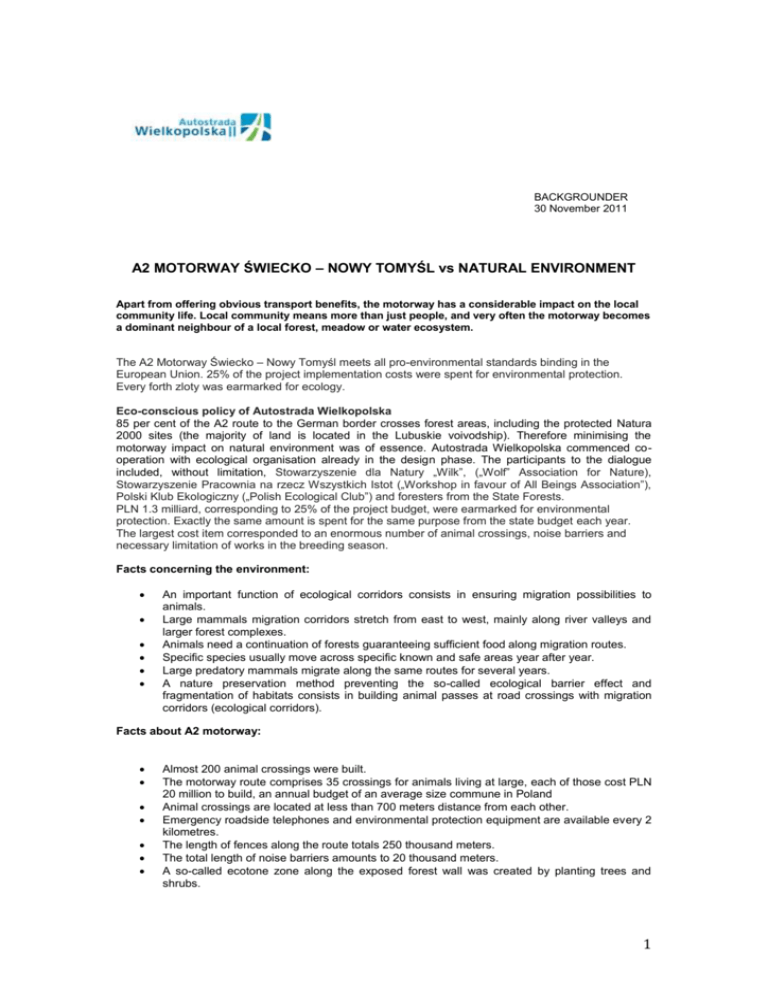
BACKGROUNDER 30 November 2011 A2 MOTORWAY ŚWIECKO – NOWY TOMYŚL vs NATURAL ENVIRONMENT Apart from offering obvious transport benefits, the motorway has a considerable impact on the local community life. Local community means more than just people, and very often the motorway becomes a dominant neighbour of a local forest, meadow or water ecosystem. The A2 Motorway Świecko – Nowy Tomyśl meets all pro-environmental standards binding in the European Union. 25% of the project implementation costs were spent for environmental protection. Every forth zloty was earmarked for ecology. Eco-conscious policy of Autostrada Wielkopolska 85 per cent of the A2 route to the German border crosses forest areas, including the protected Natura 2000 sites (the majority of land is located in the Lubuskie voivodship). Therefore minimising the motorway impact on natural environment was of essence. Autostrada Wielkopolska commenced cooperation with ecological organisation already in the design phase. The participants to the dialogue included, without limitation, Stowarzyszenie dla Natury „Wilk”, („Wolf” Association for Nature), Stowarzyszenie Pracownia na rzecz Wszystkich Istot („Workshop in favour of All Beings Association”), Polski Klub Ekologiczny („Polish Ecological Club”) and foresters from the State Forests. PLN 1.3 milliard, corresponding to 25% of the project budget, were earmarked for environmental protection. Exactly the same amount is spent for the same purpose from the state budget each year. The largest cost item corresponded to an enormous number of animal crossings, noise barriers and necessary limitation of works in the breeding season. Facts concerning the environment: An important function of ecological corridors consists in ensuring migration possibilities to animals. Large mammals migration corridors stretch from east to west, mainly along river valleys and larger forest complexes. Animals need a continuation of forests guaranteeing sufficient food along migration routes. Specific species usually move across specific known and safe areas year after year. Large predatory mammals migrate along the same routes for several years. A nature preservation method preventing the so-called ecological barrier effect and fragmentation of habitats consists in building animal passes at road crossings with migration corridors (ecological corridors). Facts about A2 motorway: Almost 200 animal crossings were built. The motorway route comprises 35 crossings for animals living at large, each of those cost PLN 20 million to build, an annual budget of an average size commune in Poland Animal crossings are located at less than 700 meters distance from each other. Emergency roadside telephones and environmental protection equipment are available every 2 kilometres. The length of fences along the route totals 250 thousand meters. The total length of noise barriers amounts to 20 thousand meters. A so-called ecotone zone along the exposed forest wall was created by planting trees and shrubs. 1 The protection programme also included the monitoring of plant and animal habitats, the ornithological monitoring of bats feeding grounds and beaver’s habitats, the protection of anthills and the amphibians and reptiles rescue programme. With such programme, the A2 concession motorway has become the largest ecological project in Europe. Concrete pavement is of importance to environmental protection, as more environment friendly than asphalt pavement. Concrete may be fully and safely recycled, unlike bituminous waste containing hazardous aromatic hydrocarbons compounds which are more difficult to reuse. In total, PLN 1 milliard 3000 million were spent for environmental protection, amounting to 25 percent of the total project construction costs. The project size and capital expenditure make the A2 motorway the largest ecological project in Europe. The construction of that critical motorway section is considered a model not only in Poland, but also abroad. In the opinion of the European Investment Bank as the main creditor, the project has been perfectly performed in observance of the highest environment protection standards. 2

